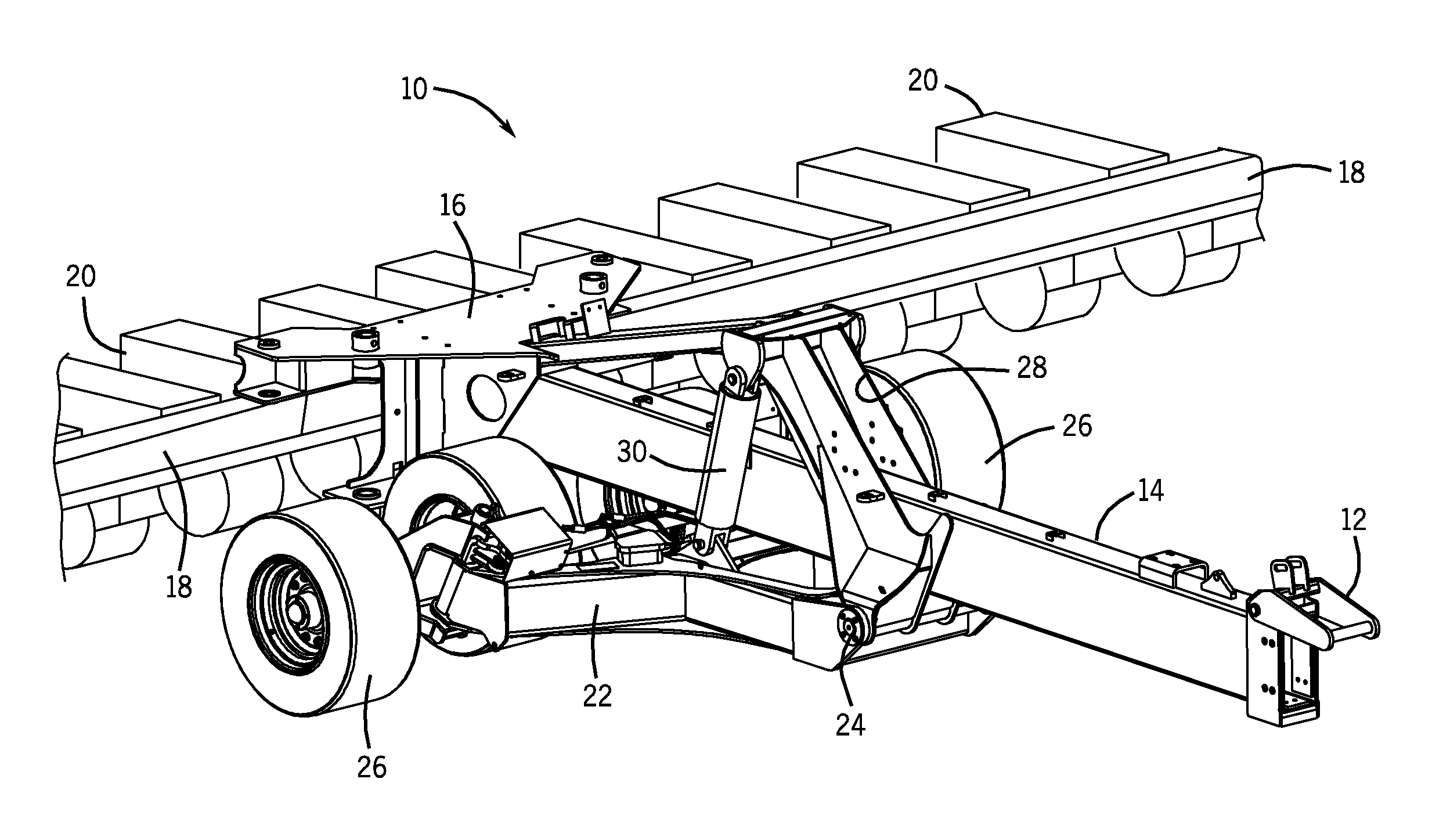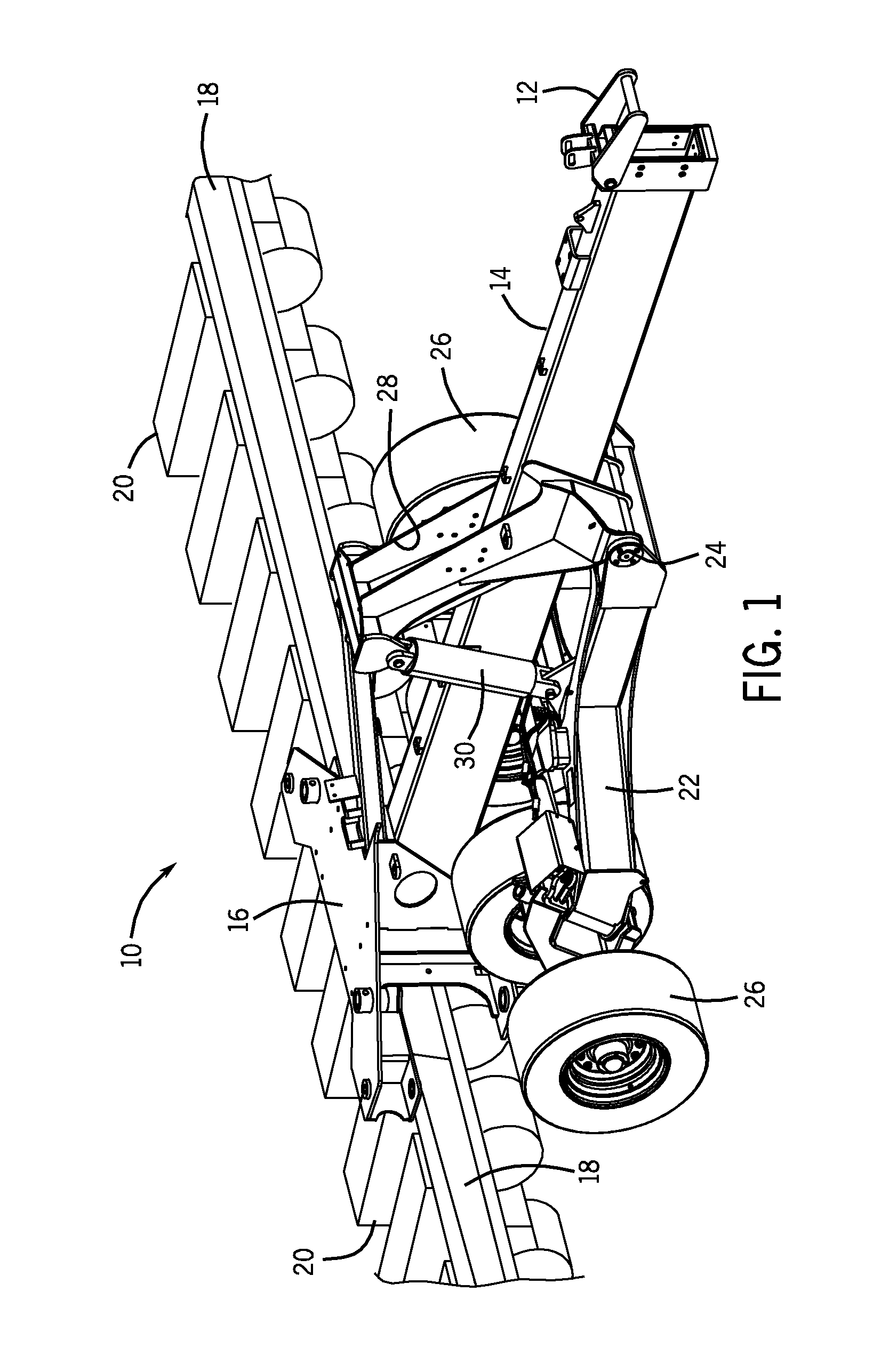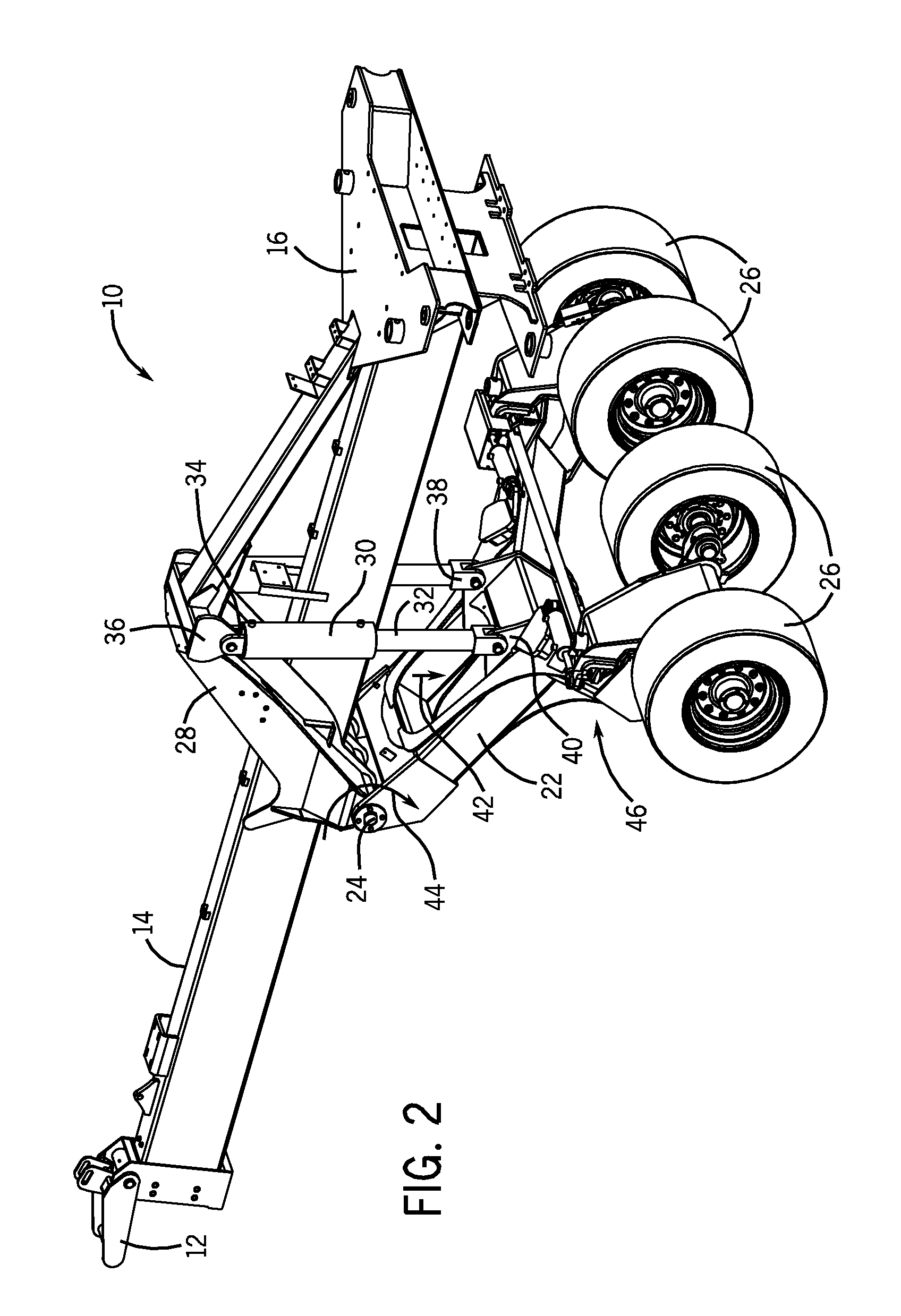Steerable agricultural implement with adaptable wheel spacing
a technology of adaptable wheel spacing and agricultural implements, which is applied in the direction of guiding agricultural machines, agricultural tools and machines, and adjusting devices, etc., can solve the problems of increasing construction costs, increasing the weight of implements, and increasing the spacing between wheel assemblies,
- Summary
- Abstract
- Description
- Claims
- Application Information
AI Technical Summary
Benefits of technology
Problems solved by technology
Method used
Image
Examples
first embodiment
[0022]FIG. 4 is a top view of the carrier frame configured to support row units 20 with 20-inch spacing. As previously discussed, the carrier frame 22 is configured to support the weight of the implement 10 and resist lateral loads caused by steering the implement 10. Consequently, the carrier frame 22 includes structural elements to transfer loads between the wheels 26 and the hitch assembly 14. In the present configuration, the carrier frame 22 includes a first lateral support member 58 configured to support the mounting flanges 50. A pair of longitudinal support members 60 extend from the first lateral support member 58 to a second lateral support member 62, forming a box structure. In the present embodiment, each support member 58, 60 and 62 is hollow and has a rectangular cross section. As will be appreciated, other support member profiles, as well as other structural arrangements, may be employed in alternative embodiments. Furthermore, plates 64 are coupled to each of the sup...
second embodiment
[0027]FIG. 5 is a top view of the carrier frame 22 configured to support row units 20 with 22-inch spacing. As illustrated, seed rows 78 are spaced a distance 88 apart to provide crops with sufficient soil area for proper development. As previously discussed, certain crops may utilize a greater soil area than others. For example, in the illustrated embodiment, the distance 88 between rows 78 is approximately 22 inches. To accommodate a 22-inch row spacing, the present carrier frame 22 is configured to establish a wheel-to-wheel spacing 90 of approximately 44 inches, such as by adjusting the length of the lateral extensions 68. As will be appreciated, positioning the wheels 26 between rows 78 may reduce soil compaction, thereby facilitating seed deposition by the row units 20. Consequently, the wheel-to-wheel spacing 90 and the spacing 92 between wheels 26 of each wheel assembly 54 are configured to position the wheels 26 such that they do not directly engage the soil along each row ...
third embodiment
[0028]FIG. 6 is a top view of the carrier frame 22 configured to support row units 20 with 30-inch spacing. As illustrated, seed rows 78 are spaced a distance 94 apart to provide crops with sufficient soil area for proper development. As previously discussed, certain crops may utilize a greater soil area than others. For example, in the illustrated embodiment, the distance 94 between rows 78 is approximately 30 inches. To accommodate a 30-inch row spacing, the present carrier frame 22 is configured to establish a wheel-to-wheel spacing 96 of approximately 60 inches, such as by adjusting the length of the lateral extensions 68. As will be appreciated, positioning the wheels 26 between rows 78 may reduce soil compaction, thereby facilitating seed deposition by the row units 20. Consequently, the wheel-to-wheel spacing 96 and the spacing 98 between wheels 26 of each wheel assembly 54 are configured to position the wheels 26 such that they do not directly engage the soil along each row ...
PUM
 Login to View More
Login to View More Abstract
Description
Claims
Application Information
 Login to View More
Login to View More - R&D
- Intellectual Property
- Life Sciences
- Materials
- Tech Scout
- Unparalleled Data Quality
- Higher Quality Content
- 60% Fewer Hallucinations
Browse by: Latest US Patents, China's latest patents, Technical Efficacy Thesaurus, Application Domain, Technology Topic, Popular Technical Reports.
© 2025 PatSnap. All rights reserved.Legal|Privacy policy|Modern Slavery Act Transparency Statement|Sitemap|About US| Contact US: help@patsnap.com



